Maker Programs and Repair
An approach for Maker-Educators beginning to think about integrating repair into their maker programs:
There are many ways to introduce repair into maker programs, but if you’re not quite sure, you might consider the following approach.
1) Review the material at the bottom of this page, following the divider line: “Repair Enriches Maker Programs”.
2) Familiarize yourselves with “Fixing Things for the Future”.
This exciting and well-developed program would be ambitious for setting up right out of the gate, and may well not exactly be your vision, but learning what the Steiner School did will expand the scope of what you’re thinking about in useful ways.
3) A bite-sized first step might be to bring the “Restart Project’s Enrichment Program” into your Maker program as an after-school project. See “The Restart Project” on the Materials from Existing Programs page. (There are other after-school projects on that page that might be more appropriate for your particular circumstance. More resources are currently being developed by CRP grantees; these will be added to this page when complete. See Prior Grantees.)
The above Restart Project Enrichment Program concludes with students hosting their own community repair event. See How to Start One for materials on how to set up an event.
If you have a community repair event program nearby (e.g., Repair Café), partnering with them is an alternative to hosting an independent event. For more on this, see the Schools and Community Repair Events page.
Added note: If there is a nearby community repair event initiative, they will be an excellent resource for finding community volunteers to help with technical matters for the after-school project (that is, the Restart Project’s Enrichment Program). Please see the Schools and Community Repair Events page for help finding a nearby community repair event. Further, search on your community and “repair cafe”, “repair event”, “fixit clinic”, “fix event”, “community repair event”, and related.
Finally, community repair events are hosted by many public libraries. (See these articles: Programming Librarian and American Libraries.)
4) After holding a more limited after-school project you will know much more about how repair might work with your maker program and what you want, equipping you to continue forward in the way that makes most sense for your particular circumstance - the resources, constraints, opportunities and priorities that shape what you do.
Please note that there are considerable other resources on this website — practical, technical, scholarly, artistic, funding, networking, etc.
Repair Enriches Maker Programs
Repair deepens the potential for learning offered by maker education.
Repair calls on the skills and thinking processes emphasized in maker educational initiatives. Repair takes them a step further by virtue of the incremental challenges of working within the tight limitations of compromised materials and functionality, and the preexisting structure of objects.
Repair amplifies:
Understanding materials, functionality, systems and design
Problem-solving skills
The connection between what students care about and what they are learning
Technical skills
Repair brings the environment squarely into making.
Integrating repair into maker programs vastly expands the relevance of those programs to our contemporary world.
The greatest impact every single person can make on the environment is to extend the life of the things they have.
Repair keeps our stuff in service longer → carbon impact goes down.
Repair grounds the process of making in what’s good for the earth.
Incorporating repair into the maker curriculum puts the energy of addressing the environment behind establishing maker initiatives in schools, and integrating making into schools' basic curriculum.
Repair facilitates and enriches an understanding of systems and design
Students’ personal involvement with their things enables them to see design and systems more clearly:
A student acquired an item to serve a purpose.
It fulfilled the need.
It broke – perhaps easily, inexplicably.
It no longer serves its purpose.
The student reflexively asks:
“Why did this break?!”
“Who made it this way?”
“How come they did it that way?!”
Through this energetically engaged response, the student is exploring:
How is the object designed?
What concerns informed its design?
Whose concerns informed its design?
Are those concerns consistent with the student's interests?
The student’s personal stake in the item highlights the design concerns informing the item's manufacture. Systems and design are no longer conceptual, classroom topics. The student is personally involved and has a stake in the situation and its resolution.
Systems highlighted and topics introduced through repair:
Economic systems - linear economy and circular economy; global capitalism, extractative capitalism, the role of consumption
Environmental systems - ecology
Physiological systems - inseparability of motor, cognitive, sensory and psychological experience
Political systems - Right to Repair, regulation and transnational corporations
Social systems - agency, community building and social justice
Psycho / economic systems - the power of marketing, social media
Repair engages students more deeply in classroom work
Students’ personal involvement with their broken things:
Supports transforming conceptual understanding into experiential understanding
Inspires practice of classroom learning - the student’s stake in the outcome motivates, not the teacher’s direction
Takes practice into students’ lives, well beyond classroom support

